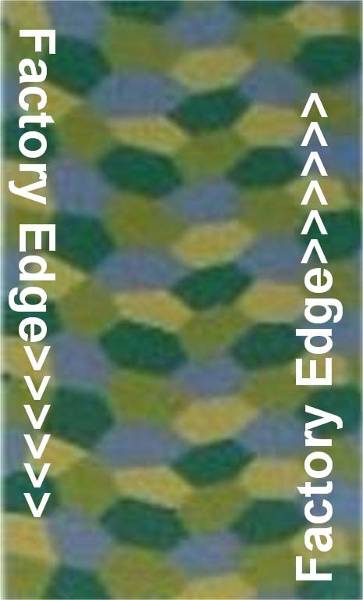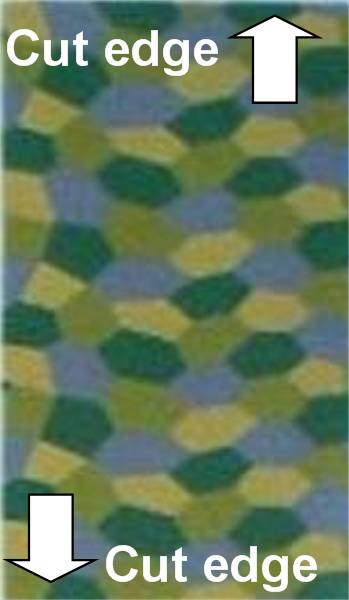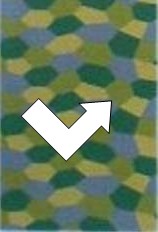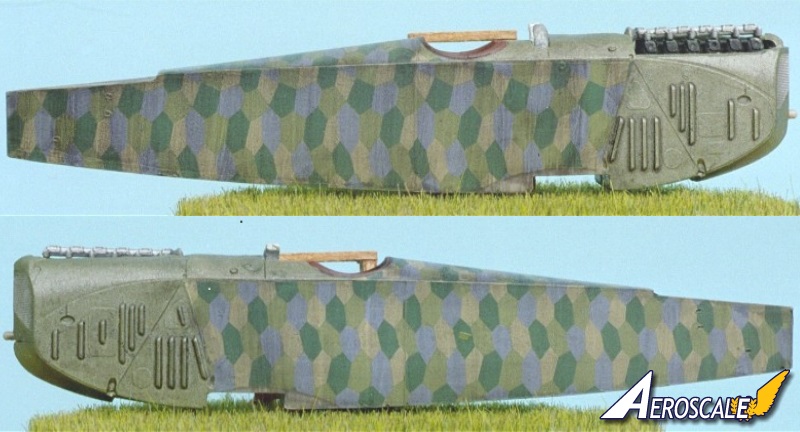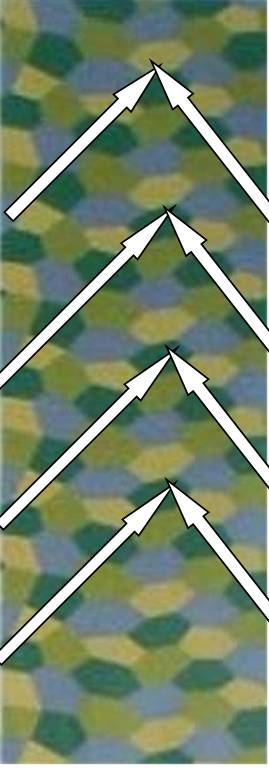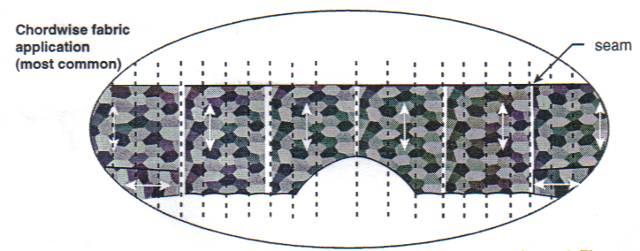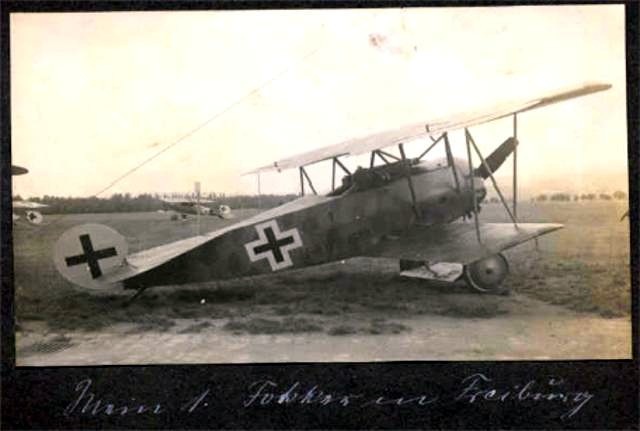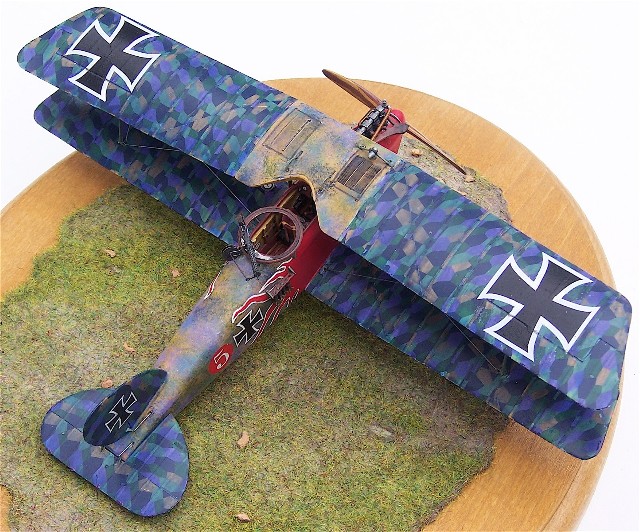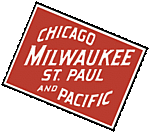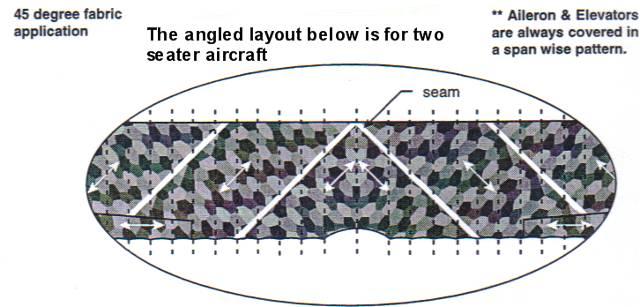
Greetings all;
I have been up burning the midnight oil on several projects. The following treatise will do for a bit of help in the application of German WWI Lozenge camouflage. There were several types but I will be discussing their applications to model kit airframes. First a bit of history.
Halberstädter Flugzeug Werke textile mills was the company that developed and printed the Flugzeugstoff (lozenge camouflage ) with the four colour layout.
The official name for the printed fabric was Flugzeugstoff, originally developed under the name "Ballonstoff", because it was originally concieved to replace the highly visible yellow of the observation balloons.
The Vierfarbiger (four colour) Flugzeugstoff with the terrain camouflage, was the opposite to the more sophisticated Fünffarbiger (five colour) Flugzeugstoff of the NAK. The darker and cheaper dyes were used for the Fünffarbiger (5 colour) Flugzeugstoff.
The four color fabric was 1320mm plus or minus 10mm wide and the five color fabric was 1350mm plus or minus 10mm wide. There was some movement inboard with the seams on the four color fabric. Still this amounted to six panels in most cases for a top wing.
Here is a section of 4 colour lozenge fabric as applied to a Fokker D.VII fuselage. As you can see it came from the opposite side of the fuselage and further back under the tail plane. This fabric was not take from the aircraft seen as a back drop. But it is used here to denote the typical shades asociated with the orthochromatic film of the day. Note the red arrow point to a common lozenge.
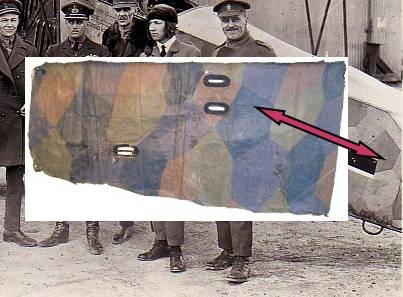
Note the definitions and descriptive labels noted here are mine in origin and are meant to be used as guidelines for modelers.







